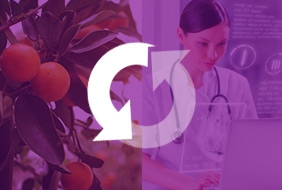Open Data, powerful resource for health and agriculture sectors
Fecha de la noticia: 27-01-2016

Thanks to the reuse of public sector information, new businesses and new business models are beginning to emerge. But, for that, public entities have to open the data they store and place them at the service of the society. According to the Characterization Study of the Infomediary Sector, in 2014 the financial turnover of infomediary businesses in Spain was from 450 to 500 million euros and the sector provided for approximately 4200 to 4700 jobs. In fact, the economic potential of open data and big data in Europe is 200000 million euros and in USA seven sectors alone could generate more than $3 trillion a year in additional value as a result of open data.
The economic value of the open data is already a reality. It has become the raw material for agriculture, nutrition or health sectors; boosting employment, providing services tailored to the society needs and developing innovative solutions. Open data is so important that, in the 4th International Open Data Conference, a panel was dedicated to the business models based on open data. The conference was the appropriate event to present the Open Data Impact Map. This initiative is a searchable, centralized database of open data cases from all around the world. Still in beta, this map will be the Open Data 500 successor.
Over the last few years the health sector has focused on open data to reduce costs, increase revenues, save time and improve medical diagnosis. Mastondon C is an excellent example. This startup has been working with Open Healthcare UK on NHS prescriptions; reusing PSI to save millions of pounds on medical prescriptions.
The scientific community is also aware of the importance of open data; not only to develope news product and services but to be sure about the integrity of any investigation or health advance. After all, if we have access to the data, we can evaluate the effectiveness of treatments and the fairness of medial studies.
Thanks to the data re-use, Google created the web service Google Dengue Trends; a near real-time tool which worked by capturing disease-related queries typed into Google and displaying a map indicating dengue activity. Though the map is disabled, the historic estimates produced by Google Dengue Trends are available to being reused by any user.
By information sharing and extracting data, technological advances has made them much easier. Agricultural and environmental sectors have made use of leading-edge technology to create new business opportunities. The UK government has unleashed 1000 farming datasets to boost the national farming productivity and help business and consumers decision-making. The data will be used to improve the quality of crop yields and deal with disease outbreaks. This is what Plantwise offers. This programme is a global resource to increase food security and improve rural livelihoods by reducing crop losses.
Together with GODAN (Global Open Data for Agriculture and Nutrition), Open Data Institute has published a discussion paper where they show how open data is a powerful tool being used to solve problems in agriculture such as drought, pests or food security.
Another noteworthy initiative is Foodie Project: an European platform hub on the cloud where data related to agricultural and farming sector are stored from open data portals and sensors located in crops and farms. This infrastructure integrates different datasets and provides high-value applications for the support of farmers and stockmen.
Analysis tools, food products, eHealth apps… There are as many business opportunities based on open data as datasets. The key issue is to identify the needs and create solutions that transform the public or private information into added value services.
Tags: open data, agriculture sector, health sector, Foodie, GODAN, ODI, Plantwise, Google Dengue Trends, Mastodon C, infomediary sector











